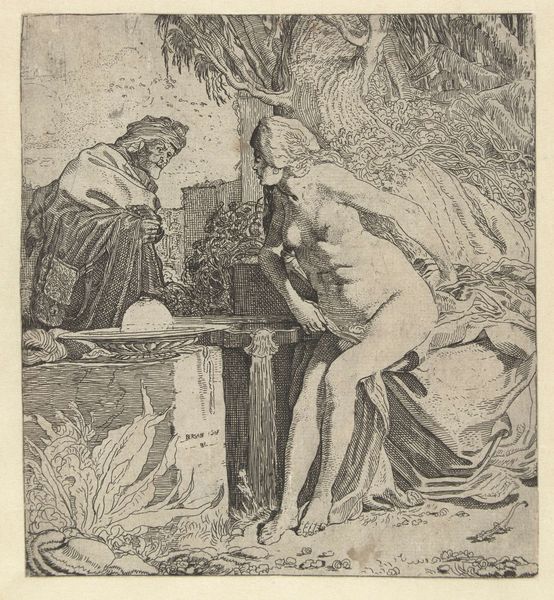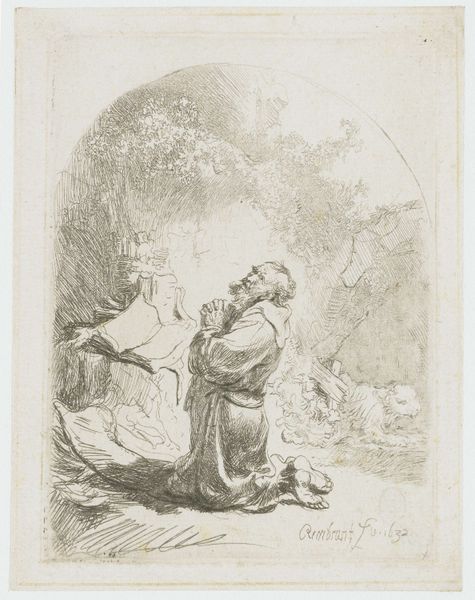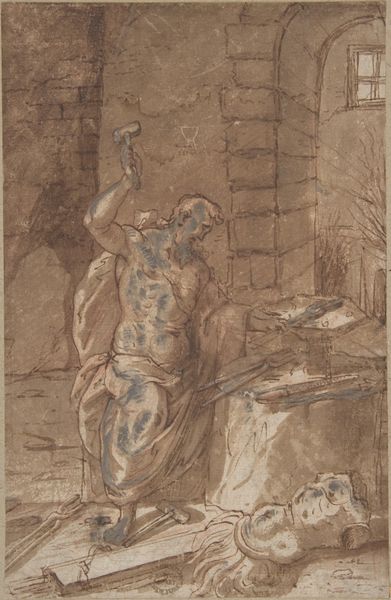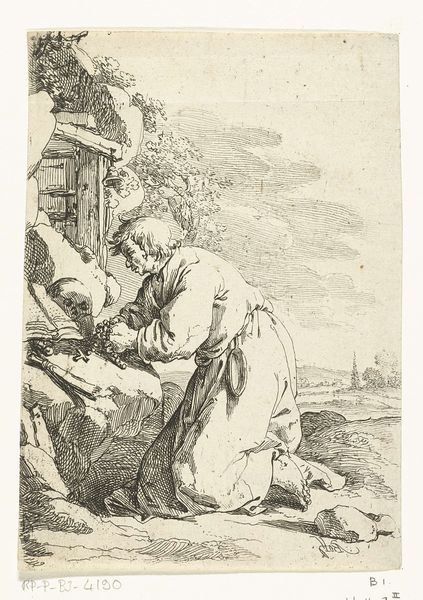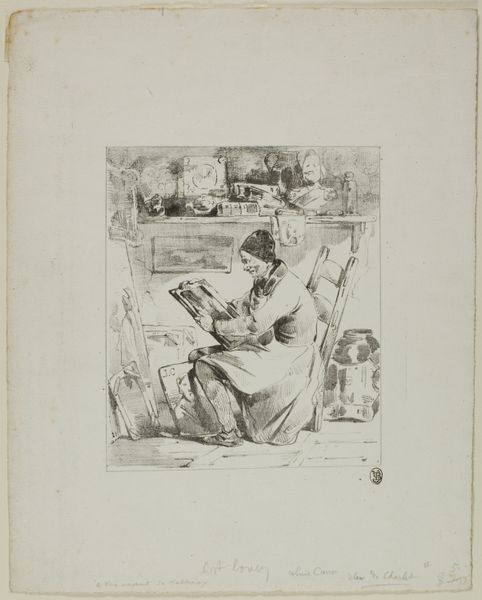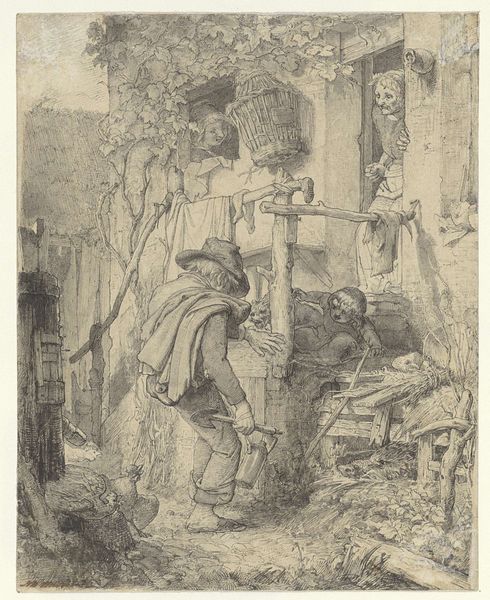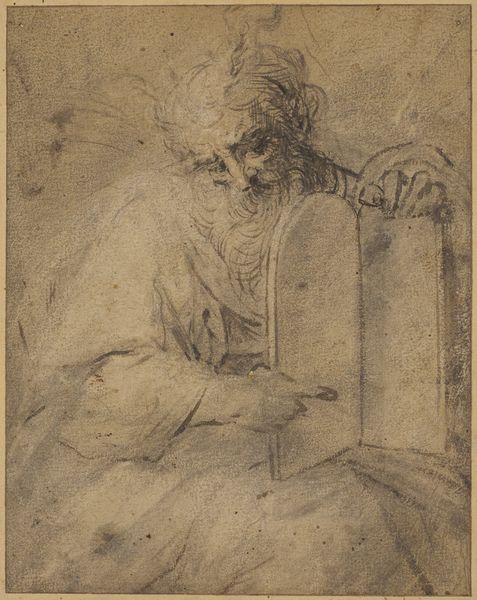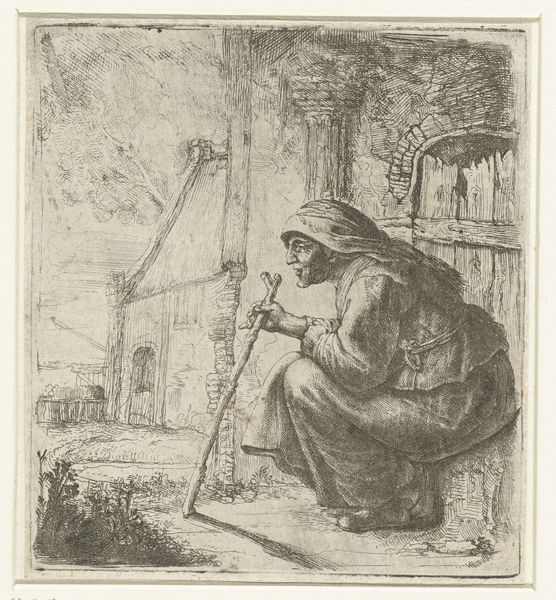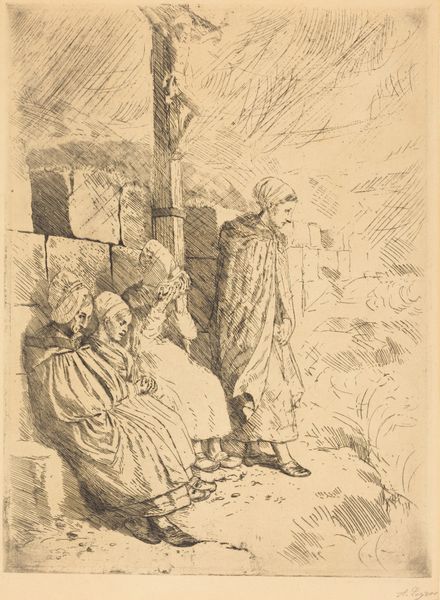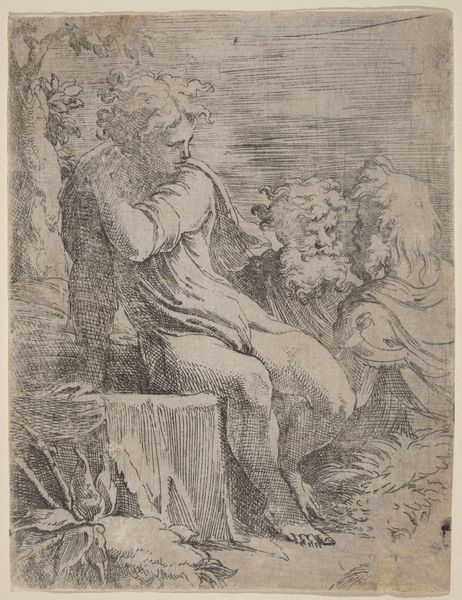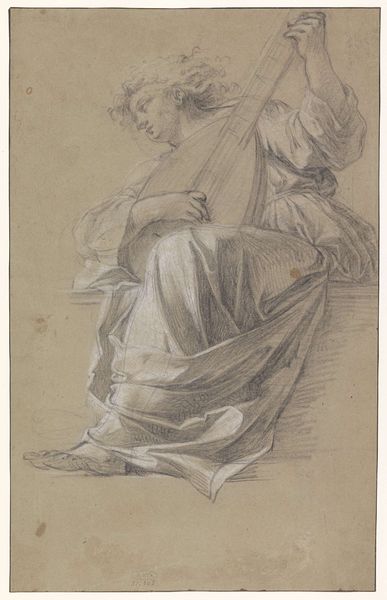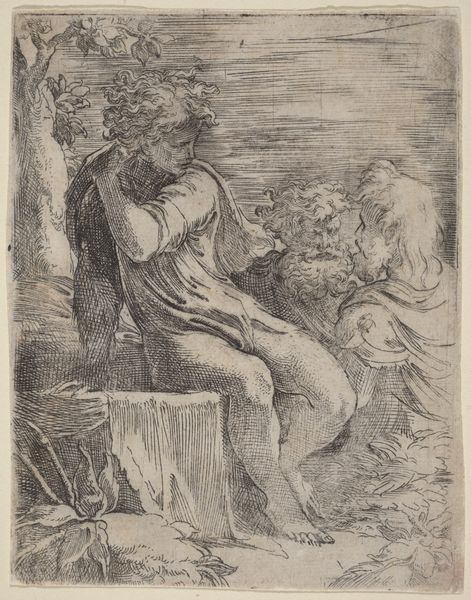
drawing, ink, pen
#
drawing
#
baroque
#
pencil sketch
#
etching
#
figuration
#
ink
#
pen
#
watercolour illustration
#
genre-painting
Dimensions: height 237 mm, width 172 mm
Copyright: Rijks Museum: Open Domain
Willem Pietersz. Buytewech created this drawing of the Holy Family with pen and brown ink, using brown wash. It presents a scene of domesticity, but understanding it requires us to delve into the cultural and religious tensions of the Dutch Golden Age. Buytewech, working in the early 17th century, navigated a society undergoing significant religious and social change. The Protestant Reformation had challenged the Catholic Church's authority, leading to new interpretations of religious imagery. In this drawing, the intimate portrayal of Mary, Joseph, and the infant Jesus reflects a shift towards more personal and relatable depictions of biblical figures. The presence of detailed architectural elements in the background—a building and what looks like a fountain or other classical construction—might reflect the humanist values gaining traction in the Dutch Republic. To fully appreciate Buytewech's work, we can consult historical archives, religious texts, and studies of Dutch art and society of the period. This will help us better understand the interplay between artistic expression, religious belief, and social context. It's a reminder that the meaning of art evolves with its cultural surroundings.
Comments
No comments
Be the first to comment and join the conversation on the ultimate creative platform.

